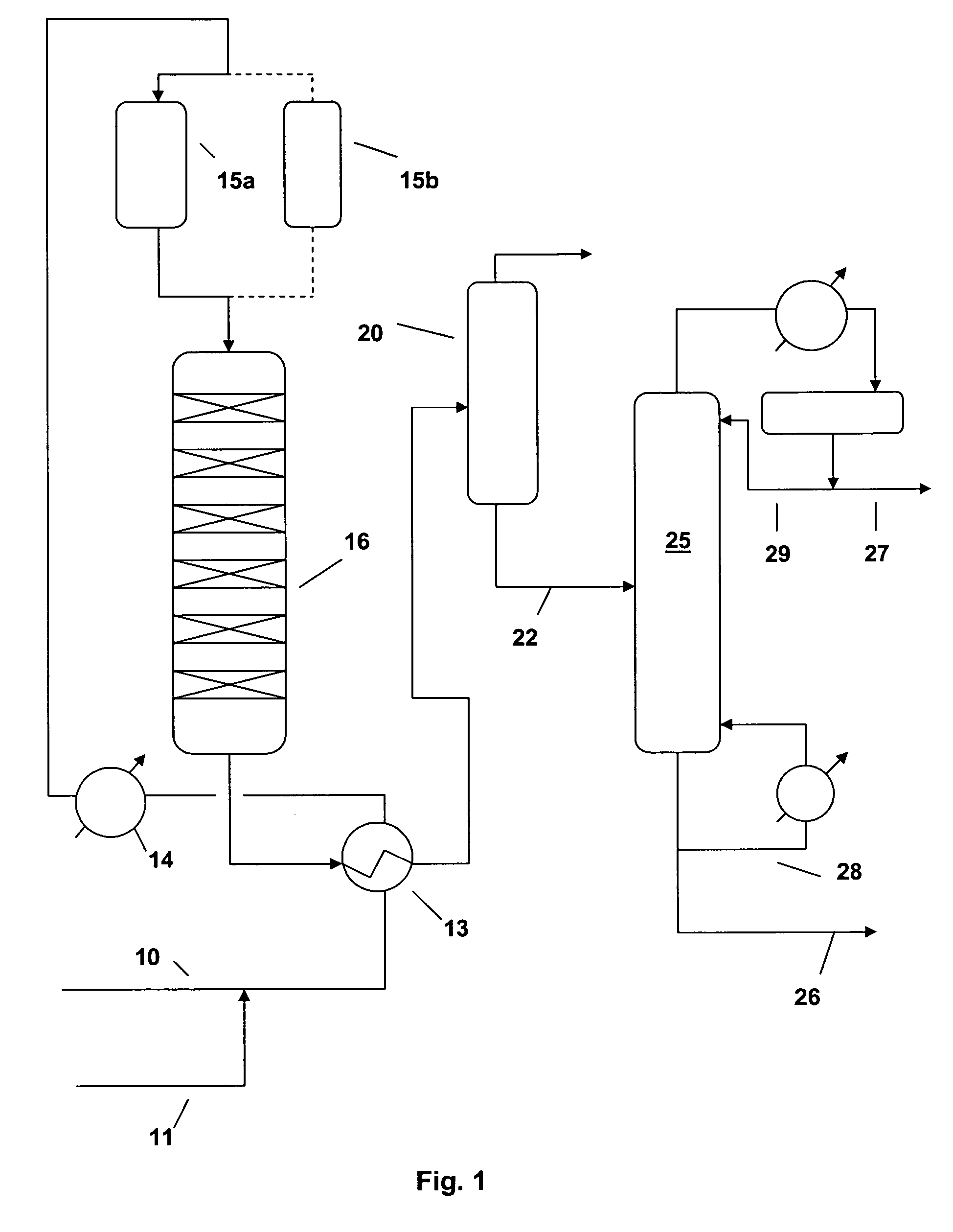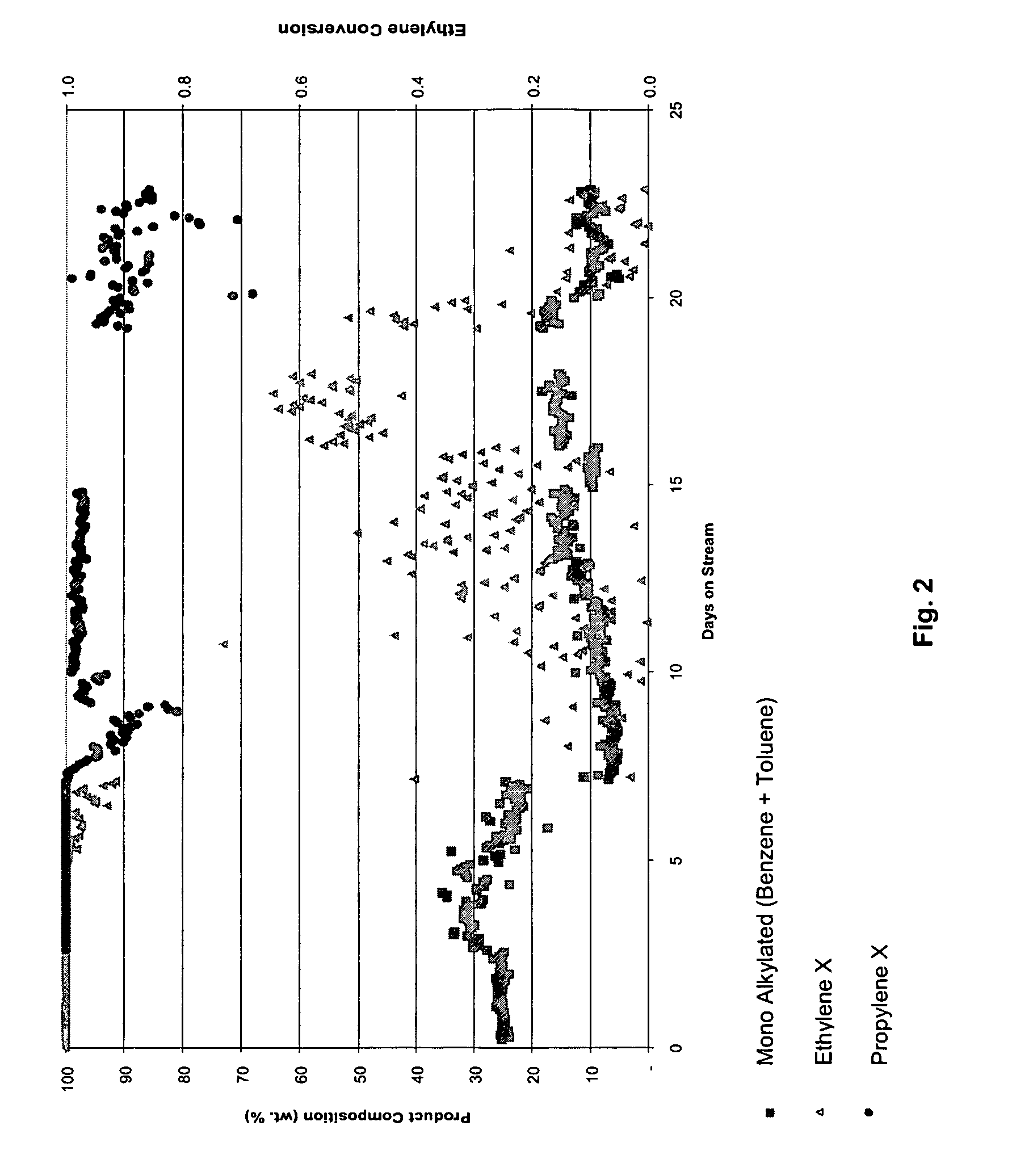Process for making high octane gasoline with reduced benzene content
- Summary
- Abstract
- Description
- Claims
- Application Information
AI Technical Summary
Benefits of technology
Problems solved by technology
Method used
Image
Examples
example 1
[0065] An aromatic feed was alkylated in a fixed-bed reactor at 1725 kPag (250 psig) and temperatures varying from 180 to 330° C. (356 to 625° F.) with an olefin co-feed. The aromatic feed was either benzene or a reformate heart cut fraction having the composition shown in Table 4 below.
TABLE 4Reformate Composition, wt. pct.C58.744C629.000Benzene24.157C711.734Toluene25.844C80.458Total99.937
[0066] The olefin feed was either chemical grade ethylene or propylene, mixed with nitrogen and hydrogen when simulating FCC Off Gas. The unit was started-up on chemical grade benzene (BZ) and ethylene only. Propylene was added at 2.5 days on 5 stream. Nitrogen and hydrogen diluents were added at 7 days to simulate FCC-Off-Gas. Propylene was removed at 15 days and added back again at 18 days to evaluate ethylene conversion in the absence of propylene.
[0067] Changes in feed composition and temperature were made during the run as indicated below.
Days on StreamActionInlet Temp. (° C.)0 (Startup)...
PUM
 Login to View More
Login to View More Abstract
Description
Claims
Application Information
 Login to View More
Login to View More - R&D
- Intellectual Property
- Life Sciences
- Materials
- Tech Scout
- Unparalleled Data Quality
- Higher Quality Content
- 60% Fewer Hallucinations
Browse by: Latest US Patents, China's latest patents, Technical Efficacy Thesaurus, Application Domain, Technology Topic, Popular Technical Reports.
© 2025 PatSnap. All rights reserved.Legal|Privacy policy|Modern Slavery Act Transparency Statement|Sitemap|About US| Contact US: help@patsnap.com



